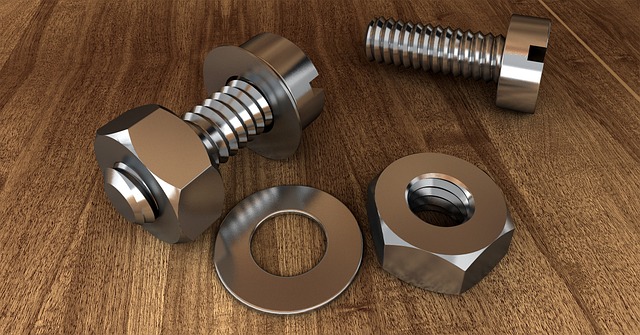WE SPEND A lot of time obsessing over our weight. While it’s generally good to keep tabs on it, your body weight won’t be able to tell you the full story of your health.
That’s because tons of factors work together to determine your overall bodyweight, including the weight of your lean muscle, your skeletal system, and your body fat. Technology including smart scales have become affordable enough to have all types of it in households and gyms, and these devices can provide us with a little more insight into your body composition.
Body composition refers to the percentages of fat, bone, water, and muscle in the body—all numbers that show up on your smart scale or other body scan tests. Here, we break down these percentages, and why they matter.
What should my body fat percentage be?
FAT PERCENTAGE CONSISTS of both essential body fat and storage body fat. According to Harvard Medical, normal ranges for fat mass are as follows:
- Ages 20-39: 8-19 percent for men, 22-33 percent for women
- Ages 40-59: 11-21 percent for men, 24-34 percent for women
- ages 60-79: 13-24 percent for men, 25-36 percent for women
“As a general rule, a lower percentage of body fat is indicative of better health,” says Eric Pham, M.D., a bariatric surgeon and weight loss expert with St. Joseph Hospital in Orange, California. “Generally speaking, an average adult male has 18 to 24 percent of total body weight as fat mass, while an average female has 25 to 31 percent. Athletes’ body fat percentages can be much lower, somewhere between 6 percent and 13 percent for men and 14 to 20 percent for women.”
Why It Matters: Men and women with higher body fat percentage are at greater risk for cardiovascular disease, hypertension, diabetes, strokes, and some cancers, says Pham.

What should my bone mass be?
THIS IS THE total mass of skeletal bone in the body. Normal bone mass for men is between 3 and 5 percent of your weight. This changes with age, as our bones reach peak mass in our late 20s, according to the National Institutes of Health.
Why It Matters: Low bone mass may increase the risk of fractures, says Pham. Weight-bearing exercise and proper calcium intake will increase bone mass, peaking around age 30. After that, it slowly decreases as you age.
What should my total body water percentage be?
THIS IS THE percentage of the body’s mass that is fluid. The human body is 50 to 75 percent water, and how much you have at any given time hinges on age, sex, and hydration. Most men will have between 50 to 65 percent; women 45 to 60 percent.
Why it Matters: Body impedance analysis (BIA—more on this in a bit) can determine the total percentage of water that’s found inside our cells and the percentage outside of the cells, called extracellular water, says Pham. “Generally, too much extracellular water may be indicative of heart, liver, malnutrition, or kidney disease.”

What should my muscle mass be?
THIS IS THE total mass of body skeletal muscle. The body has three types of muscles: skeletal, smooth, and cardiac. Skeletal muscle is under voluntary control (think biceps), smooth muscle contracts autonomously (or without any thought), and cardiac muscle makes up the main tissue of the heart’s walls. Normal ranges for muscle mass are:
- Ages 20-39: 75-89 percent for men, 63-75.5 percent for women
- Ages 40-59: 73-86 percent for men, 62-73.5 percent for women
- ages 60-79: 70-84 percent for men, 60-72.5 percent for women
Why It Matters: Higher muscle mass increases metabolic rate and prevents falls and illnesses, according to Pham. For example, a person who has a higher amount of their weight as muscle mass will burn more calories at rest compared to someone with a lower percentage of muscle mass. A higher level of muscle mass can also protect against developing diabetes, according to research published in the Journal of Clinical Endocrinology and Metabolism.
“Fat mass causes hypertension and diabetes due to insulin resistance,” says Pham. “As we age, we lose muscle mass and are more prone to falls. Loss of muscle mass causes loss of balance and strength as commonly seen in the elderly. This is why exercise is critical.”
How can I measure my body composition?
WE’RE GLAD YOU asked. There are loads of scales on the market right now (including 5 of our favorites, here!) that you can purchase with the technology that gives you a body composition readout, which is called Bioelectrical Impedance Analysis (BIA). BIA sends a very low, safe electrical signal through your feet and into the body. This signal meets resistance when it hits fat tissue, and passes quickly through water in the body. The resistance, known as impedance, is what the device uses to determine your body composition percentages.
It’s important to note, though, that BIA isn’t perfectly accurate. Many things, including your hydration levels and skin temperature, may effect its accuracy. If you choose to use one, it’s important to use it when you’re well hydrated, and before any strenuous workout. Scanning yourself the same time of day from scan to scan will also be helpful.
Before you get too hung up on your numbers, remember that this is just one part of the bigger picture. Make sure that you’re dedicating time to other aspects of a healthy routine and lifestyle, like what you’re putting into your body and the amount of sleep you’re getting (both factors that can affect these readouts, as well).
“BIA is best used in conjunction with a medically supervised weight loss program,” says Pham. “Use the first BIA measurement as a baseline measurement. Over time, as you might lose weight, BIA can be used to determine their body’s changes in fat and muscle mass.”

Emily Abbate is a freelance writer, certified fitness trainer, and host of the podcast Hurdle. You can find her work in GQ, Shape, Runner’s World, and other health and fitness publications.
Cori Ritchey, C.S.C.S., is an Associate Health & Fitness Editor at Men’s Health, a certified strength and condition coach, and group fitness instructor. She reports on topics regarding health, nutrition, mental health, fitness, sex, and relationships. You can find more of her work in HealthCentral, Livestrong, Self, and others.



